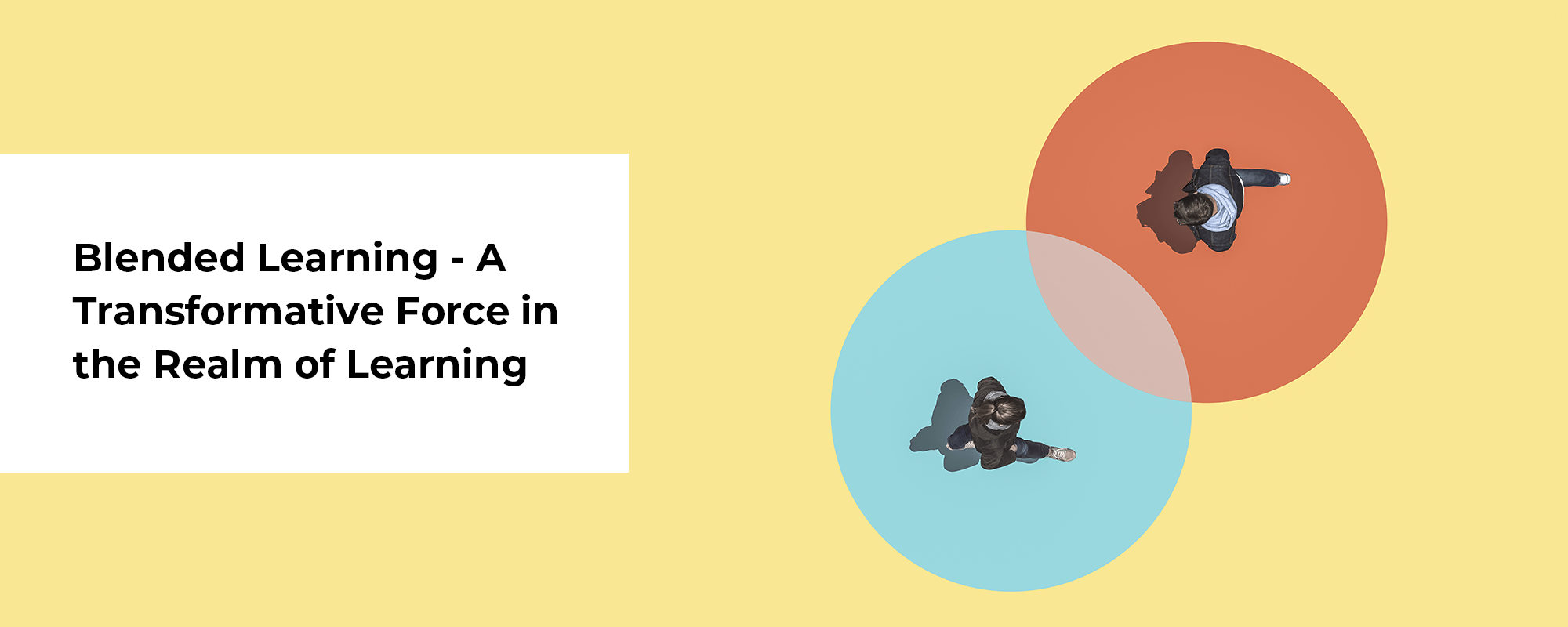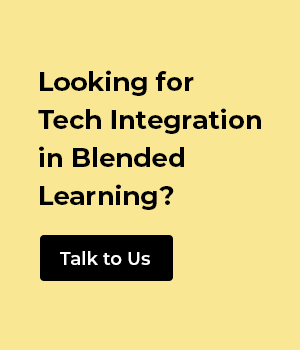Blended Learning is a relatively new concept in the world of education that made its debut in the early 2000s. As technological advancement was widespread, computers and tablets made their way into classrooms at a rapid rate. Many educators then realized the power of technology in transforming the educational process.
But to begin this transformative process, it is important to note the basic impact of technology on students’ learning before considering how blended learning has evolved in the school setting.
Findings of a Survey Conducted by Laher & Boshoff, 2017
In a study completed by a South African University, close to 300 students were given iPads to use in the classroom and at home to complete educational tasks. After finishing a year of using the iPads, students and parents were surveyed concerning the usefulness of the technology. In the study, it was found that technology had a positive impact on the students’ attitudes concerning technology in a school setting. All of the students surveyed stated that they would continue using iPads for school purposes in the future as well.
Since the basic use of iPads has been successful in brick-and-mortar campuses, the use of technology has been taken to a deeper level through the integration of blended learning. It began by substituting paper copies for digital platforms when distributing, submitting, and grading assignments (which can be done via learning management software). As it proved beneficial for students and teachers alike, teachers began to question how they could further use technology to deepen the understanding of students and personalize their learning experiences. This realization made way for blended learning.
Table of Contents
Overview of Blended Learning
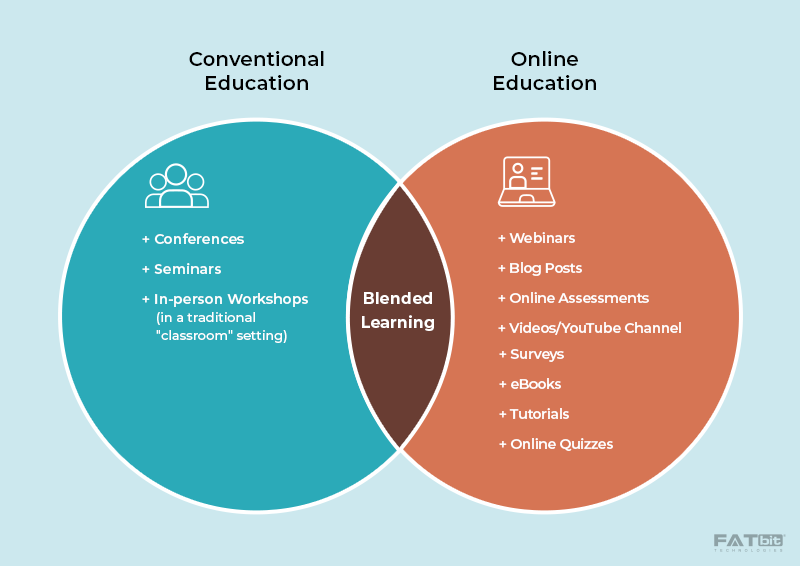
Blended learning or hybrid learning is a major segment of the continuum between traditional face-to-face and fully online settings. According to the Glossary of Education Reform, blended learning is generally applied to the practice of using both in-person and online learning experiences when teaching students. This kind of learning uses online technology to transform and improve the learning process and not just supplement it.
Further, in a blended learning approach, the teacher’s role from knowledge provider is shifted to that of a coach or a mentor. This shift does not imply that the teacher takes a passive role. It’s quite the contrary with blended learning. As more students are working independently, time opens up for teachers to provide individualized support and attention to them.
Learners Centricity – Need for Flexibility
In the realm of educational transformation, the student’s needs, learning, and growth are given more weightage. According to the Academic Bank of Credit, learners are provided with the flexibility to pick teachers and timings, frame their courses as per their needs and interests, and give exams when ready. The graphical representation below presents the idea.
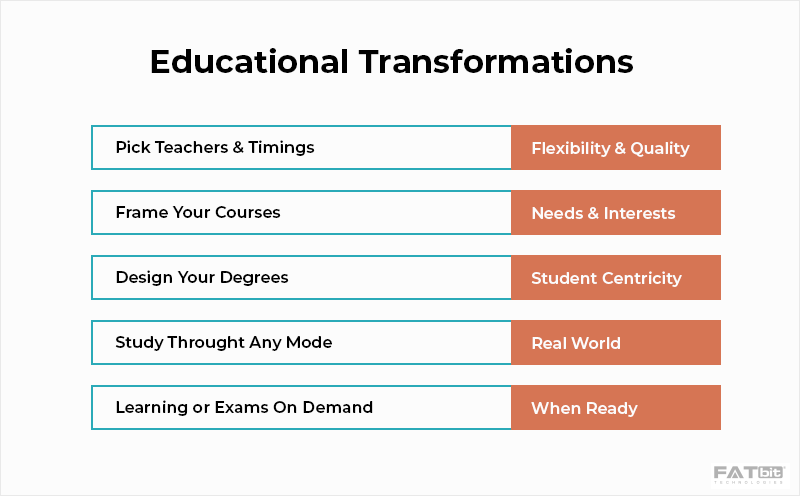
Distinct Blended Learning Models
Blended learning provides the ultimate flexibility in many aspects. Although there are a few basic models of blended learning, the possibilities are endless when it comes to the ways in which the instructional technologies can be blended into a teacher’s pedagogical approach. Below we discuss a few:
Flex Blended Learning Model
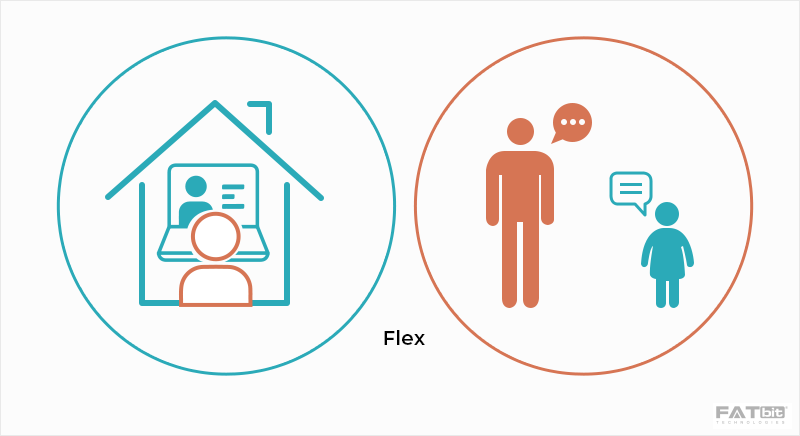
In the Flex model, most of the curriculum is delivered via a digital platform. Here, online learning is the backbone of student learning and teachers are available for face-to-face consultation and support. The students work independently and learn to develop/create new concepts in a digital environment. The model provides a flexible learning environment as students are free to arrive at the brick-and-mortar campus at any given time of the day. The teacher in this model acts as a mentor and guides students through the learning process by delivering proper instructions.
The ‘Flipped Classroom’ Blended Learning Model
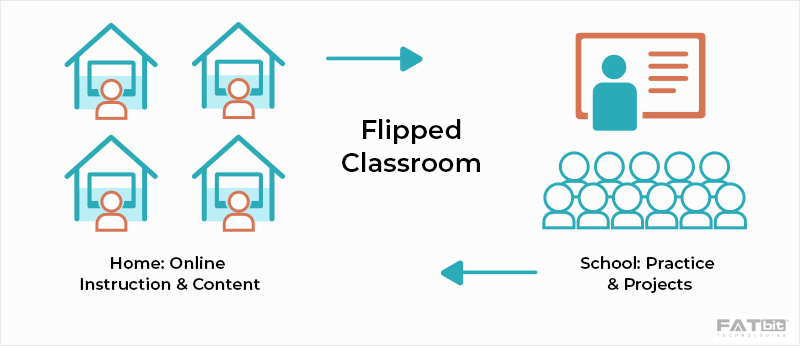
The most widely known version of blended learning, a ‘Flipped Classroom’ is where students are introduced to the content at home. They practice working through it at school supported by a teacher and/or peers. In this method, the traditional role of each other is flipped. Such as students watching online lectures and then collaborating in online discussions. This also means that the students carry out research at home while actively engaging in concepts in the classroom.
Resources such as video lectures, recordings, podcasts, and articles are provided to transfer the main bulk of the necessary knowledge from the teacher to the student before each class. This frees up time in class for teachers to support students in activities that lead to discussions, and facilitate engagement (such as quizzes and other games).
Lab Rotation Blended Learning Model
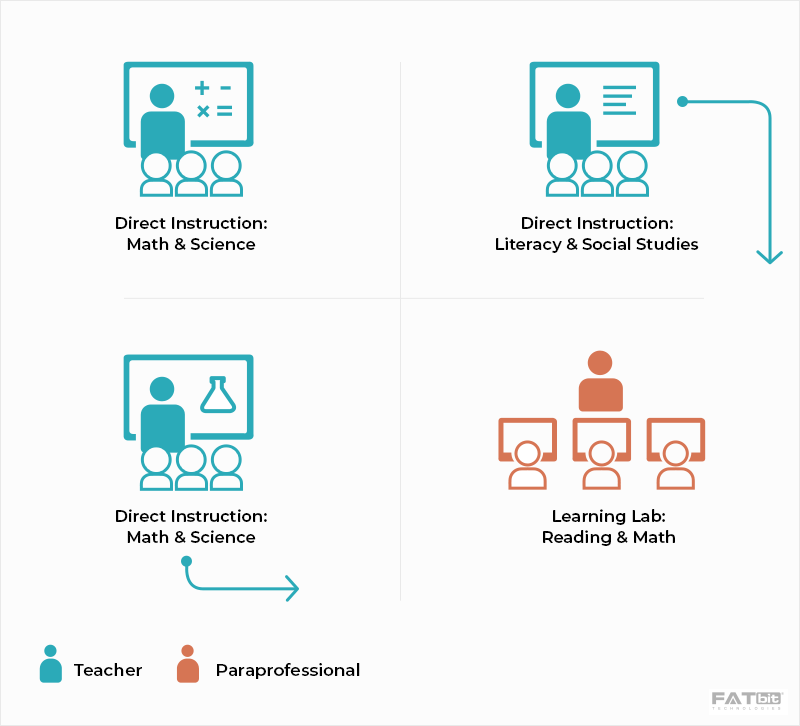
This is another model of blended learning which works by allowing students to rotate through digital stations on a fixed schedule, i.e. learners are required to physically change rooms. Learners rotate to a computer lab for online learning activities rather than staying within the same classroom. This model seems to be popular in the following environment:
- Elementary classrooms in which students can be divided based upon their skill levels, for example – reading and Math. Thus students who are performing well in reading may have face-to-face time with their teachers for Math before rotating to the online learning stations for reading.
Face-to-Face Blended Learning Model
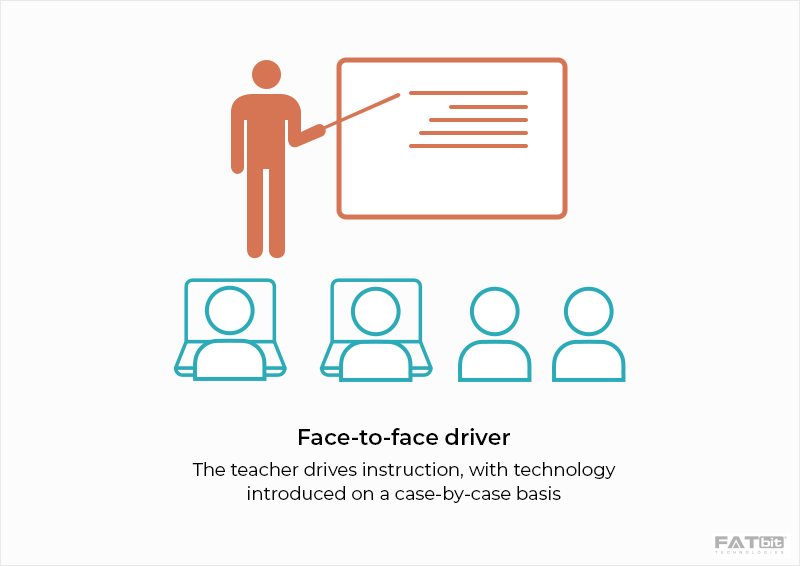
As the name implies, the face-to-face model of blended learning involves a great deal of student-teacher interaction. It is primarily (although not always) delivered through classroom teaching, where students are in physical attendance. Here, the teacher drives the instruction, augmented with digital tools. With this approach, the introduction of online instruction is decided on a case-by-case basis, i.e. only a certain number of students who are struggling or working above their grade level are facilitated to progress at their own pace (using the technology).
Online Lab Blended Learning Model
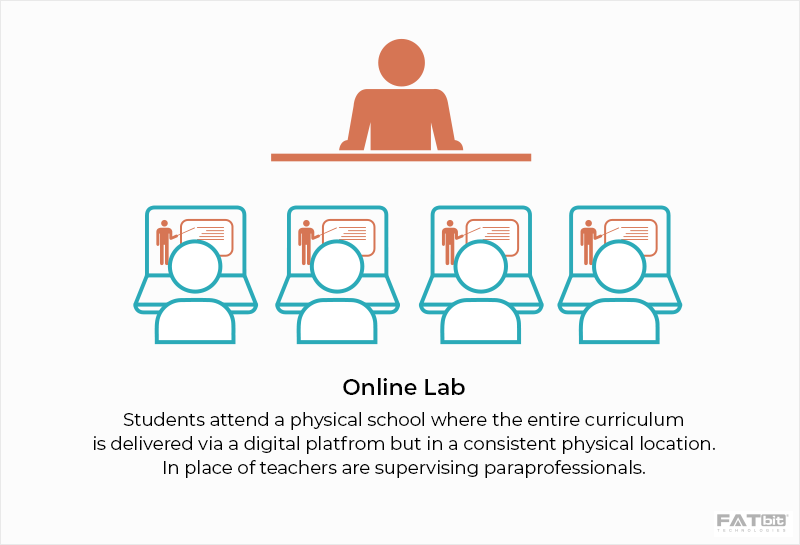
As schools increasingly face tighter resource constraints, the online lab model is a viable option for helping students complete their courses including those not offered at the specific site. In this scenario, all of the curricula are delivered via a digital platform but in a consistent physical location (such as a computer lab). Individuals supervise the lab, but they are not teachers who are trained. Further, this model allows schools to offer courses for which they do not have enough teachers.
Self-Blend Blended Learning Model

The self-blend model of blended learning allows students to augment their traditional learning with online coursework. For this model of blended learning to be successful, students need to be highly motivated. It is ideal for students who want to take additional, advanced placement courses or those who are interested in a subject area that is not covered in the traditional course catalog.
Online Driver Blended Learning Model
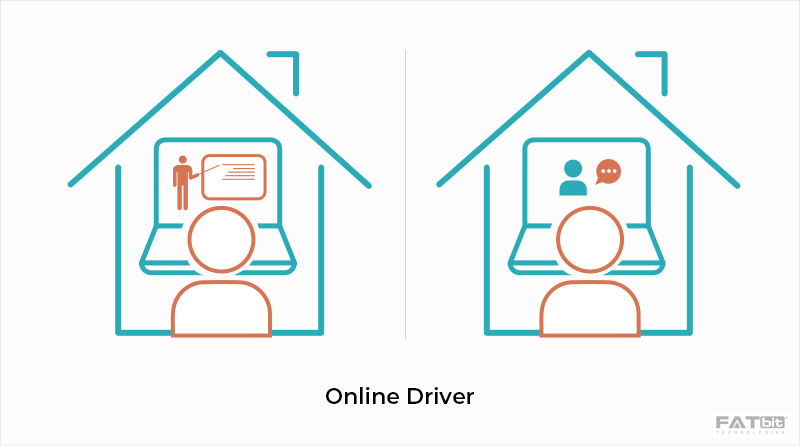
Opposite to the face-to-face model, the online driver model is where students work remotely and the material is delivered via an online platform. Although face-to-face check-ins are optional, students can usually chat with teachers online if necessary. This model of blended learning is perfect for students who need more flexibility and independence in their daily schedules.
À La Carte Blended Learning Model
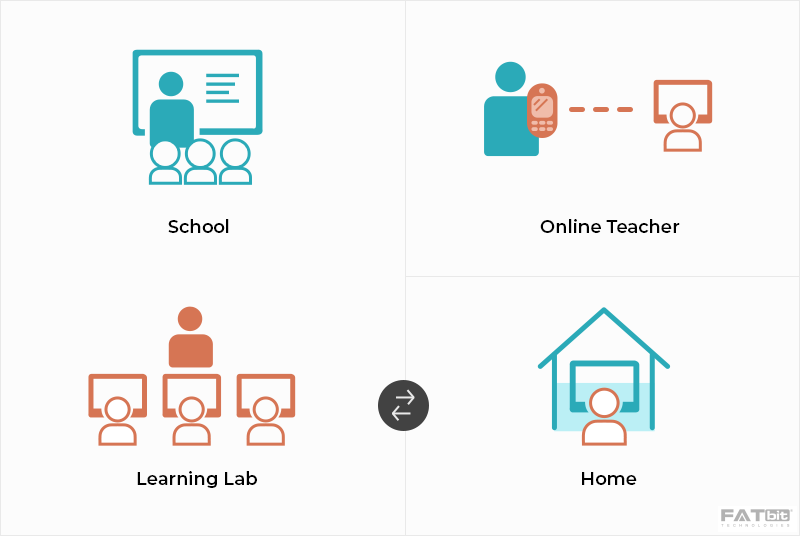
In the À La Carte blended learning model, learners take an online course in addition to the core curriculum. This means that students have the option to pick and choose courses online as a way to supplement their existing course load. The students are expected to get the work done by a given due date. Further, the communication with the instructor happens online via email or another chat program.
Transform Learning with A Blended Learning Approach
Understanding the Positives of Blended Learning
Online learning is one of the fastest-growing trends in the education sector. As per a survey by Allen and Seamen, more than 2,800 colleges and universities have reported the following:

As noted above, the survey suggests that online education can not only match, but also surpass traditional face-to-face learning. Hence, mentioned below are some of the advantages of online education amalgamated with face-to-face teaching, i.e. blended learning.
Personalized Learning Experience
As an adaptive instructional model, blended learning facilitates personalized experiences by leveraging new-age edtech technologies. The approach enables students to acquire knowledge in their preferred ways, such as by reading ebooks, watching video lectures, or watching podcasts. At the same time, teachers can leverage software solutions to track the progress of every student and help them understand content by suggesting relevant learning material, providing assistance, and answering questions.
Provides Real-time Feedback and Advice
In a brick-and-mortar campus, teachers need time to measure the performance of individual students. They have to review assignments or evaluate papers before sharing feedback. But with the approach of blended learning, teachers can share feedback immediately. They can measure the performance of students using a variety of options, including online quizzes and tests, and can share the feedback without putting in extra effort or time. Also, the performance of slow learners can be boosted by giving advice or providing assistance at the right time.
Opportunity for Collaboration at a Distance
The conventional learning approach mostly makes students collaborate with their classmates. But blended learning creates opportunities for students to collaborate with other learners across institutions at different locations. A student can join online discussion forums to discuss and understand a topic or concept from multiple perspectives. This collaboration aids students to retain knowledge along with acquiring soft skills that will help them boost their professional growth in the future.
Blended Learning Technology – Making The Right Choice
As you begin to chart a blended learning program, you will need to plan out the educational technologies that you will use for the same. Educational technologies are initially defined in terms of hardware like mobile devices, computers, or laptops and the networks (wired and wireless) that connect them. But in blended learning, technology is a system or a tool that is used to solve problems. While many companies offer blended learning tools, not all of them are equal. Mentioned below are some of the points that should be considered before making the definitive choice.
Adaptability
Every learner has a different learning style. It may require a faster or slower pace. With this in mind, always find a tool that adapts to the needs of each student or employee. Many blended learning tools offer additional instructions to learners. Even the instructors will be able to see who may be in need of help and contact them.
Clear Data
A hybrid learning tool tracks all the aspects of a student’s learning. In addition to test scores, the tool should track how long each student takes to complete a task. Further, a tool that shows video engagement can give great feedback on how well the content holds learners’ attention.
Ease of Use
It can be challenging for a teacher or a tutor to specialize in several fields as being acquainted with different subjects is not feasible. Hence, a good blended learning tool should give instructors access to helpful resources. Moreover, this help can guide both the learner and the instructor to success.
Get Consultation on Aligning Blended Learning With Your Business Goals
Blended Learning in Corporate Training
Blended learning offers individuals the opportunity to study further, thereby, enabling lifelong learning. In this section, we share a few examples of how enterprise companies are using blended learning to improve their programs related to employee training and development.
Intel

Intel, the microprocessor behemoth, takes pride in its record of minimal product defects. Hence, it requires its technicians to be proficient with the equipment and also perform preventive maintenance and troubleshooting.
Since the competencies of the technicians vary by location and site, the company implemented a blended learning approach to connect professionals with different experience levels across locations. The initial training was conducted over two weeks with a result of a 157% ROI with a benefits-to-cost ratio of 2.27.
The Boeing Company

The Boeing Company (aviation company) wanted to improve its CTL (Capture Team Leader) training to reflect the work that the business development role performs in the organization. So the company devised a blended learning solution that included small web-based training lessons.
The curriculum allowed the employees to gain a foundational understanding of the CTL role, responsibilities, and the tools needed. This approach also enabled them to practice the skills of a CTL before attending the live session. The outcome was that 82.5% of the respondents could immediately use the course content on the job, and 100% responded that they would recommend the course to a colleague.
Ernst & Young
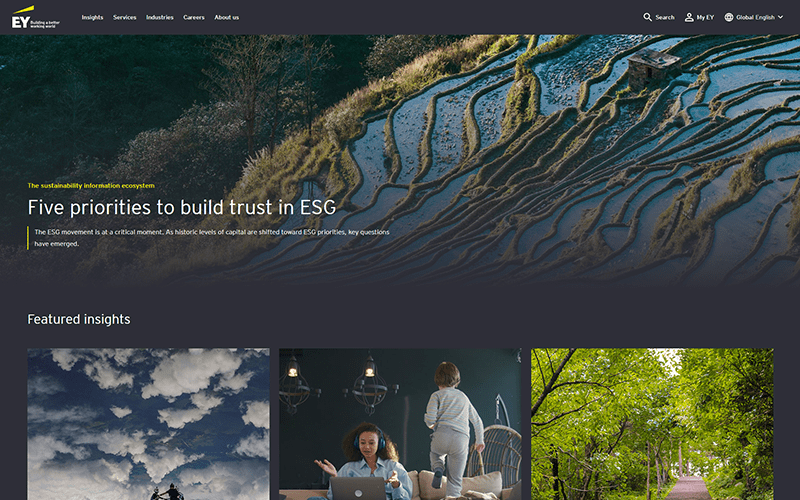
The multinational professional services firm, Ernst & Young started adopting blended learning solutions in 2000. Soon after, the company was able to reduce its training costs by 35% that too without sacrificing the consistency and quality of training. In fact, the eLearning techniques of Ernst & Young became scalable as they were able to condense 2,900 hours of classroom learning into 700 hours of web-based learning, 500 hours of classroom instructions, and 200 hours of distance learning, cutting total training time by about half. Further, the streamlining of the L&D process had far-reaching consequences as the company was able to launch a global eLearning platform to engage its 100,000+ workforce. This led to reduced costs and improved professional development.
Leveraging the Visuality Factor with Blended Learning
Online learning success stories demonstrate that videos are a crucial tool for the online segment of blended learning. It has been established that 83% of institutions use videos as a form of learning (for their remote teaching and learning programs). And, 84% have seen the positive impact of videos on students learning. So, a part of the job in a blended learning environment is to have videos (screen recordings, demonstrations, and more). Hence, while searching for the right online education platform for blended learning, a rich suite of video capabilities should be available in it. This is where Yo!Coach, a product of FATbit Technologies can help.
Yo!Coach is a best-in-class, online tutoring software that allows entrepreneurs to launch a blended learning platform with video-based interactive learning features. It is a fully customizable and easy-to-use software that is ideal for blended learning.
Set of interactive features to enhance online learning and consultation experience include:
- Audio/Video chat
- Virtual Whiteboard
- Textpad
- Screen Sharing
- Screen Recording
- Auto Translation in Real-Time Chat
Harness the benefits of Blended Learning with Yo!Coach
Conclusion
| “If we teach today’s students as we taught yesterday’s, we rob them of tomorrow.” – John Dewey |
Digital revolution is shifting the landscape of learning, and nowhere has the impact been greater than in education. Even before the pandemic, blended learning, a pedagogical approach had been steadily gaining traction due to its flexibility, convenience, and cost-effectiveness. Even the educators have also realized that the one-model-fits-all approach to learning will not be effective during this era of the ongoing pandemic. Hence, the adoption of visually powered blended learning is the need of the hour as it will fulfill the requirements of educating future generations.
Frequently Asked Questions
Q1. What is blended learning?
Blended learning is an approach that combines face-to-face and online learning experiences, giving learners some control over path and pace. Ideally, both online and offline will complement each other by using their particular strengths.
Q2. What are the various models of blended learning?
-A few models of blended learning are, the flex model, flipped classroom model, lab rotation model, face-to-face model, online lab model, self-blend model, online driver model, and so on. However, possibilities are endless due to the numerous ways in which instructional technologies can be blended into a teacher’s pedagogical approach.
Q3. What are the benefits of blended learning?
-Blended learning provides the following benefits:
- Personalized learning experience
- Provides real-time feedback and advice
- Provides an opportunity for collaboration at a distance
Q4. What to look for in blended learning technology?
-Several companies offer blended learning tools but not all of these are equal. Certain things that should be considered are adaptability, clear data, and ease of use.
